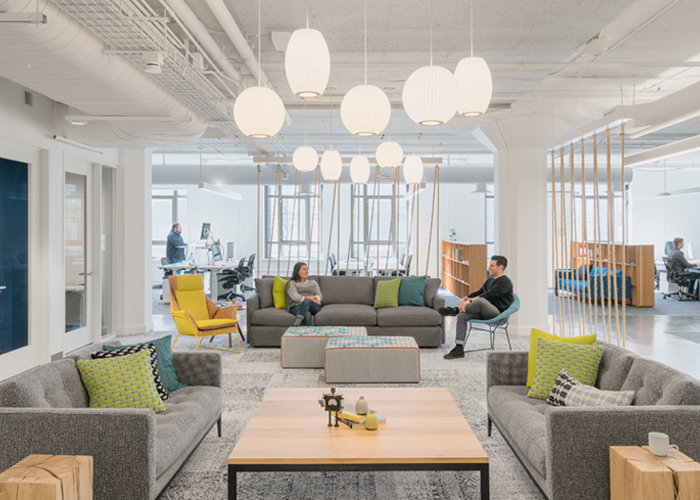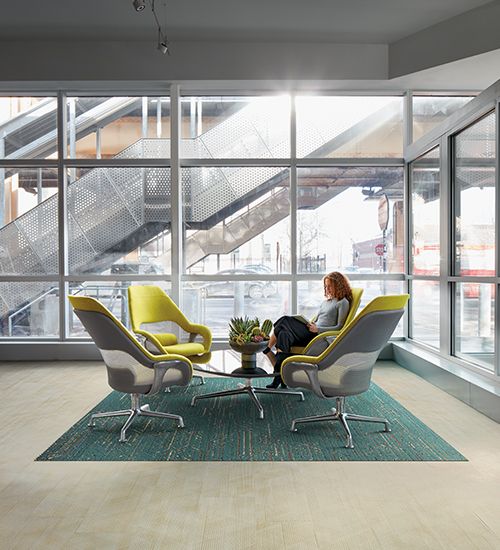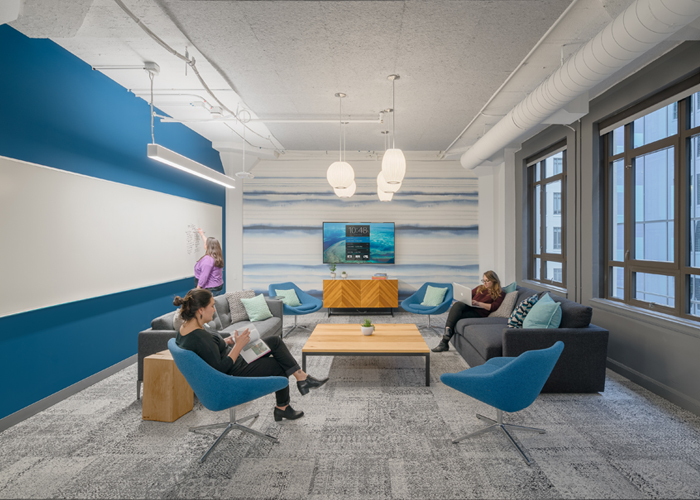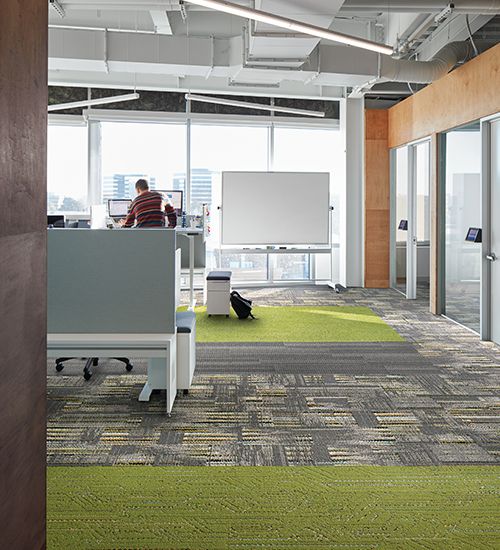Change happens fast.
With technology, change happens even faster. Our devices have become second limbs, ingrained into every facet of our lives. Technology has transformed our global culture in ways we could never have anticipated. It connects us. It makes our lives easier. On the other hand, it can also polarize and isolate us. It can have negative effects on our health. It’s a push and pull that we as a culture have not yet figured out how best to handle.
So how does it play out? On a cultural level, we see trends clash as a reflection of what’s going on in the world. And in design, it trickles down into a mix of colors and materials that transform our spaces in unique ways.
Technology and culture
For every action, there is an equal and opposite reaction.
Just as the Arts and Crafts movement of the late 19th century was a response to rapid industrialization, the current Maker movement is a response to rapid technologizing. It brings a do-it-yourself focus and a desire for authenticity to what is perceived as an impersonal, high-tech world. It marries organic material, form, and expression to technology in innovative ways — think of how Etsy has created a community of independent artisans or how Kickstarter has given makers the ability to crowd-source funding and find an audience.
The Maker movement is reflective of our subconscious cultural backlash to an increasingly digital world. We seek balance between this artificial, connected culture and the natural, immersive experiences that offer respite and solitude. But truly, it’s when technology and craftmanship come together that we find harmony.
Culture trends: high-tech meets high-touch
When it comes to materials, craft never really goes away. It evolves. In art and design, it has manifested in a more soothing form of expression: calm, biophilic colors that blend and overlap; soft, plush textures that are highly tactile; natural textiles that can only be made by hand. It’s about getting back to the basics, returning to the natural world and “recharging.”
Contrast this with the euphoric, playful influence of technology. Colors are hyper-saturated and unnatural, blending the lines between what’s real and what isn’t. Bright color-blocking and high contrast harkens a resurgence of the Memphis movement. Artists and designers are experimenting with the senses, blending the physical and digital worlds to surreal effect. It’s a complete and total absorption of technology.

Saturated color and glitchy effects are a visual influence of technology on artists and designers.
When presented with these two opposing concepts, we find balance by blending them together. This can be seen in the colors we use. For example, Pantone’s Color of the Year, Ultra Violet is at once saturated and spiritual. We’ve seen innovative applications of technology and textiles at the spring design shows. And within interiors themselves, we’ve observed a mixing of materials and finishes that can stimulate creativity and contribute to personal well-being.
Technology and design: commercial interiors
It’s no surprise that technology is the biggest driver behind the design of commercial interiors.
The modern workforce is increasingly mobile. Not only do workers desire more remote work, but they also want more control over their surroundings within the office. So, it becomes more experiential—more “human.” The blur between commercial design, hospitality design and residential design creates spaces that cater to physical and social well-being through programming, amenities and zoning. The corporate office becomes a destination.
This is because while we can work anywhere, we still need human connection. Wi-Fi anywhere and advanced video/audio conferencing means we can conduct meetings without being in the same room. And, charging stations and power sources become integral to an office’s overall design plan. More tech equals more flexibility and more connectivity.
As the line between residential and commercial design becomes more blurry, we see open offices split up into zones: dedicated workstations, private huddle rooms, and open, relaxing spaces with homey furnishings and finishes. Photography by Cortez Media Group
Technology-free zones allow for relaxation thanks to abundant natural light and comfortable seating. Products shown: Circuit Board, Drawn Lines LVT
With workers more mobile than ever, open office spaces need areas where they can get away from their desks and get some focused work done.
Thanks to the seamless integration of technology into the workplace, spaces are flexible, serving as conference rooms, impromptu collaborations stations, or quiet spots for “being alone together.” Here, the focus is on comfort and collaboration. Photography by Cortez Media Group
Technology has influenced the colors we find in office designs — bright pops of color abound, creating energy and inspiring creativity. Products shown: Circuit Board, Hard Drive, Stitchery
However, while we’re exposed to more technology than ever, offices are incorporating spaces that are technology-free or technology-light. Furnishings and finishes become highly tactile. Technology becomes camouflaged. Comfort becomes key as workers seek to take a break from all the “connectedness.” It’s the idea of being alone together in a space that allows for privacy but also for conversation. More time away from our devices and from other people allows us more space for mindfulness.
This also produces a renewed focus on well-being in the office. The rise of the WELL Building Standard goes beyond the design and construction of a space to focus on programming, amenities, and comfort. It’s the action/reaction again as we receive more information about the impacts of technology on our health.
Ultimately, technology creates a more connected world. As it continues to integrate more fully into our personal and professional lives, how will we respond?





3 responses to “How Is Technology Affecting Design?”
Actions speak louder than words this article is Well written where is the material to support the conclusion that she comes to
This is really an opinion piece and I agree with her premise. Since the necessary integration of technology into our workspaces reared it’s ugly head in the early 80’s while were also discovering that the materials we were surrounding ourselves with were harming the environment and killing us we all have been struggling to find a balance. I hope the days of throwing rows of bench desks in a stripped bare space with no regard to acoustics and sensory comfort and calling it state of the art are behind us.
Would love to know which series goes with Allermuir’s Blue Open chairs, much appreciated!